Foot pain is a common complaint that can range from mild discomfort to debilitating pain, affecting all ages and lifestyles. Understanding the various causes, symptoms, and treatment options for foot pain is essential for effective management and prevention.
In this article, we’ll delve into
Common Causes of Foot Pain:
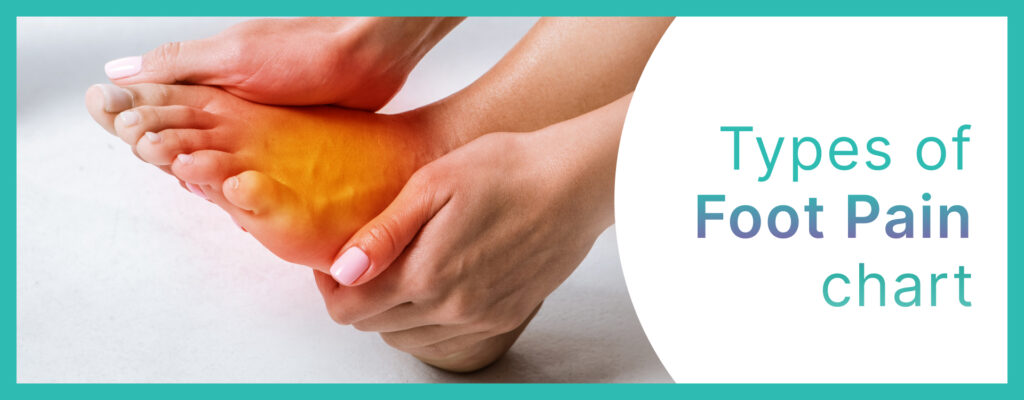
- Plantar Fasciitis: Inflammation of the plantar fascia tissue along the bottom of the foot.
- Achilles Tendinitis: Inflammation of the Achilles tendon connecting the calf muscles to the heel bone.
- Bunions: Bony bumps that form on the joint at the base of the big toe.
- Ingrown Toenails: When the edge of a toenail grows into the surrounding skin.
- Sprains and Strains: Stretching or tearing of ligaments and muscles due to injury or overuse.
- Fractures: Breaks in the bones of the foot caused by trauma or repetitive stress.
- Arthritis: Inflammation of the joints leading to pain, stiffness, and swelling.
- Neuropathy: Nerve damage, commonly associated with conditions like diabetes.
- Flat Feet: Lack of arch in the foot, causing pain and discomfort.
Symptoms of Foot Pain:
Common symptoms of foot pain include:
- Pain (sharp, stabbing, dull, throbbing)
- Swelling
- Redness
- Stiffness
- Tenderness
- Difficulty walking or bearing weight on the affected foot
- Numbness or tingling sensation
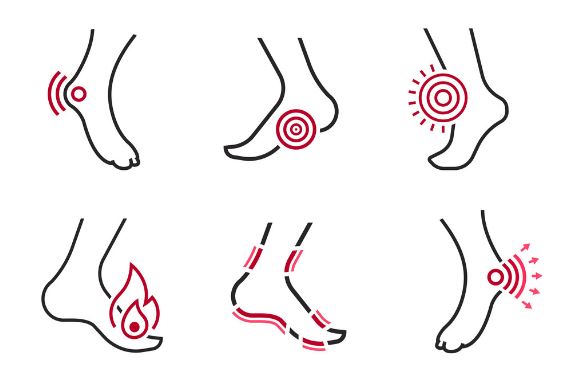
Diagnosis of Foot Pain:
Diagnosing foot pain typically involves:
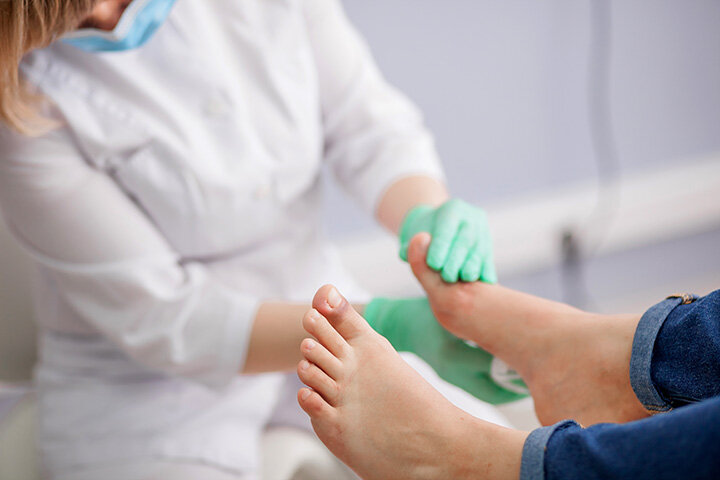
- Physical examination by a healthcare professional.
- Review of medical history and symptoms.
- Imaging tests like X-rays, MRIs, or CT scans to visualize bones and soft tissues.
- Blood tests to check for underlying conditions like arthritis or diabetes.
Treatment Options for Foot Pain:
Treatment for foot pain may include:
- Rest: Avoid activities that exacerbate the pain.
- Ice: Apply ice packs to the affected area to reduce swelling and pain.
- Elevation: Keep the foot elevated above heart level when resting.
- Orthotic devices: Custom-made shoe inserts or orthotic devices can provide support and alleviate pressure on specific areas of the foot.
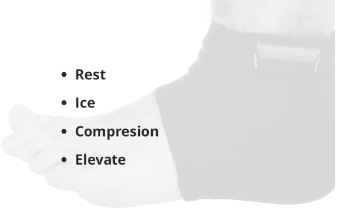
- Pain relievers: Over-the-counter medications like ibuprofen or acetaminophen can help alleviate pain and inflammation.
- Physical therapy: Stretching and strengthening exercises can improve flexibility and support the foot.
- Proper footwear: Wearing shoes that fit well and provide adequate support can prevent and alleviate foot pain.
- Surgery: Surgical intervention may be necessary in severe cases to correct underlying structural issues or alleviate chronic pain.
Preventive Measures for Foot Pain:

Preventive measure to reduce the risk of foot pain:
- Wearing properly fitting shoes with good arch support and cushioning:
- Shoes that don’t fit properly or lack adequate support can cause various foot problems, including pain.
- Opt for shoes that fit well and provide ample arch support and cushioning to absorb shock while walking or engaging in physical activities.
- Gradually increasing the intensity and duration of physical activities:
- Overuse injuries, such as plantar fasciitis or stress fractures, can occur when you suddenly increase the intensity or duration of physical activities.
- Gradually ramping up your activity level allows your feet to adapt to the added stress, reducing the risk of injury.
- Maintaining a healthy weight:
- Excess weight puts additional stress on your feet, leading to pain and discomfort.
- By maintaining a healthy weight through a balanced diet and regular exercise, you can alleviate some of the pressure on your feet and lower the risk of developing foot problems.
- Stretching and strengthening the muscles of the feet and ankles regularly:
- Stretching and strengthening exercises help improve flexibility and stability in the feet and ankles, reducing the risk of injuries such as strains or sprains.
- Simple exercises like toe curls, calf stretches, and ankle rotations can be incorporated into your daily routine to keep your feet healthy and strong.
- Practicing good foot hygiene and grooming:
- Keeping your feet clean and well-groomed can help prevent infections, such as athlete’s foot or toenail fungus, which can cause discomfort and pain.
- Make sure to wash your feet daily, thoroughly dry them, and regularly trim your toenails to prevent ingrown toenails.
- Addressing underlying medical conditions:
- Conditions like diabetes or arthritis can contribute to foot pain and increase the risk of complications.
- It’s essential to manage these conditions effectively with the help of a healthcare professional to minimize their impact on your foot health. This may involve medication, lifestyle changes, or other treatments tailored to your specific needs.
By incorporating these preventive measures into your daily routine, you can significantly reduce the risk of foot pain and enjoy better overall foot health. However, if you experience persistent or severe foot pain, it’s essential to consult a healthcare professional for proper diagnosis and treatment.
Can Insoles Reduce Foot Pain?
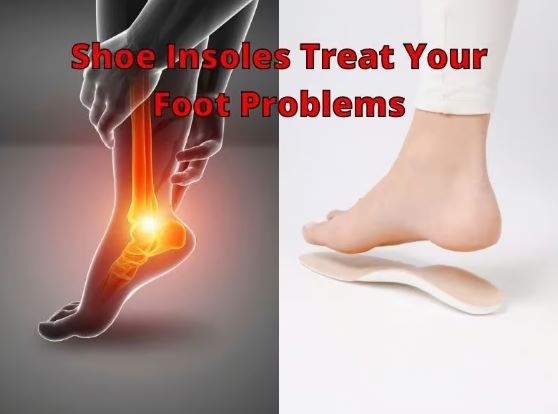
Here are several ways in which insoles can contribute to alleviating foot discomfort:
- Arch Support: Insoles with arch support can help distribute weight evenly across the foot, providing support to the arch and reducing strain on the plantar fascia. This can be particularly beneficial for individuals with flat feet or high arches.
- Cushioning: Insoles with cushioning properties can absorb shock and impact, reducing pressure on the feet during activities such as walking, running, or standing for extended periods. This can help alleviate pain associated with conditions like plantar fasciitis or metatarsalgia.
- Alignment Correction: Some insoles are designed to correct foot alignment issues, such as overpronation or supination. By promoting proper alignment, these insoles can help reduce strain on the muscles and ligaments of the foot and ankle, potentially relieving associated pain.
- Pressure Relief: Insoles with targeted pressure relief zones can help alleviate pain in specific areas of the foot, such as the heel or ball of the foot. This can be beneficial for conditions like heel spurs or Morton’s neuroma.
- Customization: Custom-made orthotic insoles can be tailored to the individual’s foot shape and specific needs, providing personalized support and comfort. These insoles are often recommended for individuals with more severe foot pain or structural abnormalities.
- Shock Absorption: Insoles with shock-absorbing properties can reduce the impact of repetitive movements on the feet, ankles, and lower limbs. This can help prevent or reduce pain associated with conditions like stress fractures or tendonitis.
Overall, while insoles can be helpful in reducing foot pain for many, it’s essential to choose the right type of insole based on your specific needs and the underlying cause of your foot pain. Consulting with a healthcare professional or podiatrist can help determine the most appropriate type of insole for your condition and ensure proper fit and effectiveness.
Conclusion:
Foot pain can significantly impact an individual’s quality of life, but with proper understanding and management, it can be effectively treated and prevented. By recognizing the common causes, symptoms, diagnosis methods, treatment options, and preventive measures for foot pain, individuals can take proactive steps to alleviate discomfort, improve mobility, and enhance their overall foot health. Consulting a healthcare professional for proper diagnosis and treatment is crucial for addressing persistent or severe foot pain and avoiding further complications. With timely intervention and lifestyle modifications, individuals can maintain healthy and pain-free feet for a better quality of life.
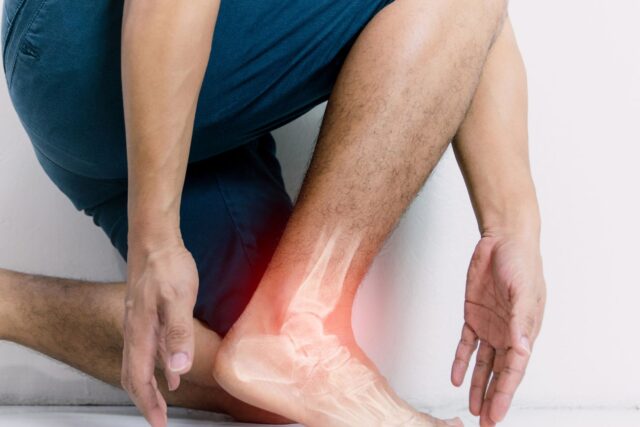


MOST COMMENTED
Animal-Based Proteins / Casein Protein / Dietary Protein / High-Protein Diets / Pea Protein / Plant-Based Proteins / Protein / Protein Deficiency / Protein Supplements / Proteins / Whey Protein / Whey Proteins
Is Protein Powder Safe for Teenagers and Children?
Animal-Based Proteins / Casein Protein / Dietary Protein / High-Protein Diets / Pea Protein / Plant-Based Proteins / Protein / Protein Deficiency / Protein Supplements / Proteins / Whey Protein / Whey Proteins
Unlock the Power of Proteins for Optimal Gut Health
Multivitamin
Total Health: Multivitamin for Active Lifestyles
Multivitamin
WellnessFusion: Complete Multivitamin Support
Dietary Supplement
Revitalize Your Health: The Magic of Red Yeast Rice Capsules
Foot care / Foot Health
Revitalize Your Foot Care Routine: Essential Tips for Optimal Foot Health
Foot Problem / Diabetics / Foot Health
Diabetics: Mastering Footwear Selection for Enhanced Foot Health and Ultimate Comfort
Exercises and Footwear Tips for Hammertoe Relief / Foot care / Foot Health / Foot Pain / Foot Problem / Hammertoes
Unlock Effective Exercises and Footwear Tips for Hammertoe Relief
Hammertoes / Foot Health / Foot Pain / Foot Problem
Unlock Relief: Essential Guide to Hammertoes Causes, Symptoms, and Treatments
Foot Problem / Foot Health
Revolutionize Your Recovery: Natural Remedies for Plantar Fasciitis – Fresh Home Keepers